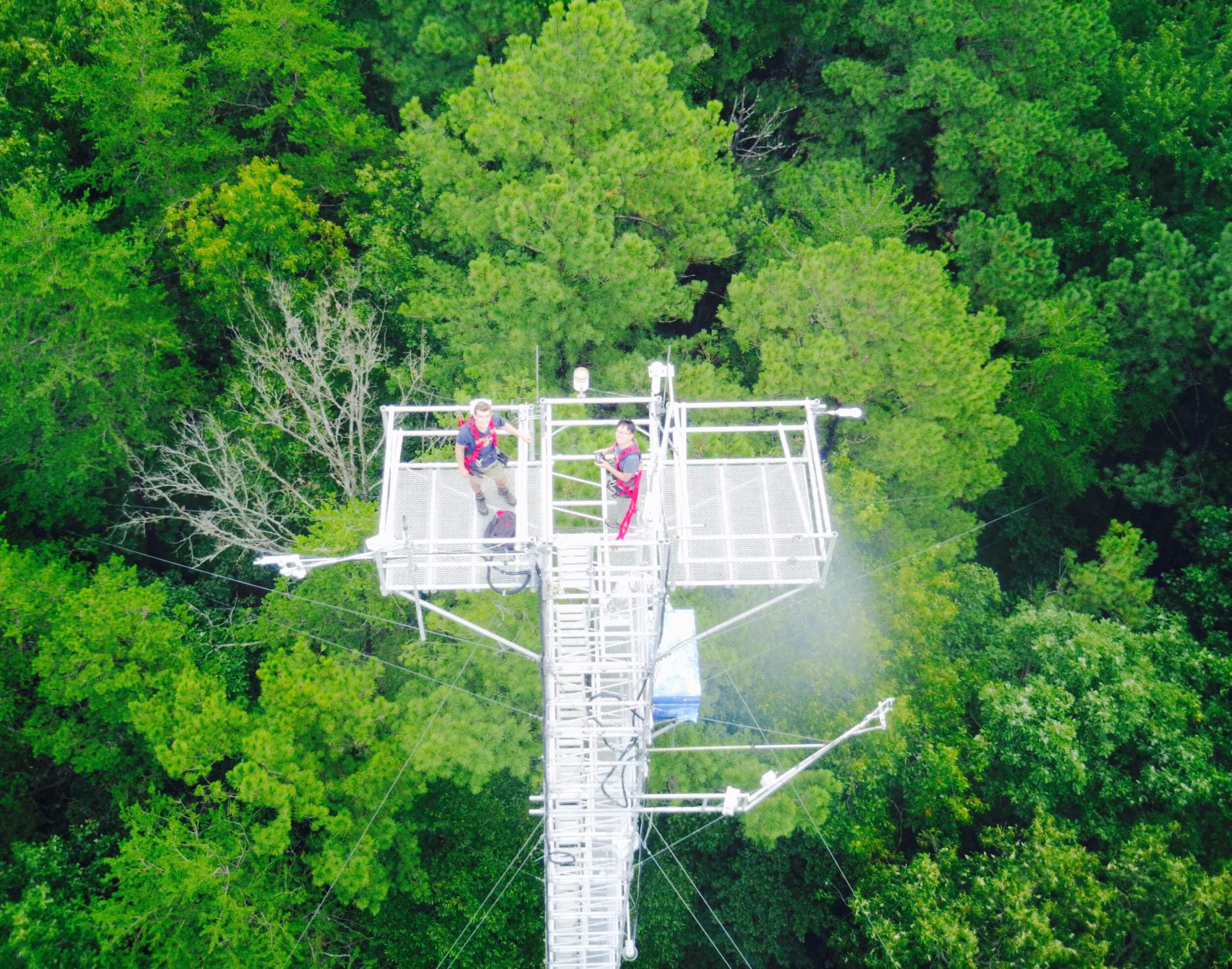Research
We are interested in climate-vegetation interactions. We examine processes at fine scales (leaf) and upscale the findings at regional to global scales.
 1. Novel remote sensing tools to understand the carbon and water cycles. Particularly, we are interested in the applications of solar-induced chlorophylll fluorescence (SIF). We develop tools to measure SIF from the leaf to the ecosystem scale.
1. Novel remote sensing tools to understand the carbon and water cycles. Particularly, we are interested in the applications of solar-induced chlorophylll fluorescence (SIF). We develop tools to measure SIF from the leaf to the ecosystem scale.
We have research sites in temperate mixed forests, semi-arid ecosystem, salt marsh, and tundra arctic. We aim to understand the use of SIF from both an ecophysiological perspective and a remote sensing (radiative transfer) perspective.
 2. Drone-based remote sensing. We are interested in using drones to provide novel insights in ecophysiological mechanisms that are based on individuals. We have a fleet of drones that measure properties ranging from SIF, thermal, hyperspectral reflectance, to tree colors (phenology).
2. Drone-based remote sensing. We are interested in using drones to provide novel insights in ecophysiological mechanisms that are based on individuals. We have a fleet of drones that measure properties ranging from SIF, thermal, hyperspectral reflectance, to tree colors (phenology).
 3. Forest structure - function relationship. We combine remote sensing of canopy physiology (SIF, hyperspectral, and thermal) and canopy structure (Terrestrial and airborne LiDAR) to understand the joint controls and coordination of forest structure and function.
3. Forest structure - function relationship. We combine remote sensing of canopy physiology (SIF, hyperspectral, and thermal) and canopy structure (Terrestrial and airborne LiDAR) to understand the joint controls and coordination of forest structure and function.
We are interested in how leaf angle changes vertically, seasonally, and across species.
 4. Impact of sea-level rise and salt-water intrusion on coastal ecosystems. With the support from the UVA Environmental Resilience Institute, we are developing remote sensing tools to understand the impact of sea-level rise on coastal vegetations. We are also interested in general the carbon cycles of coastal vegetation, particularly salt marshes.
4. Impact of sea-level rise and salt-water intrusion on coastal ecosystems. With the support from the UVA Environmental Resilience Institute, we are developing remote sensing tools to understand the impact of sea-level rise on coastal vegetations. We are also interested in general the carbon cycles of coastal vegetation, particularly salt marshes.
